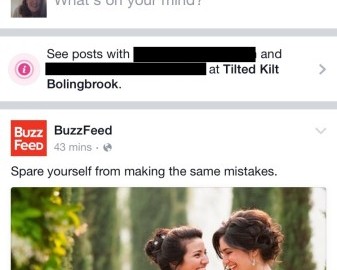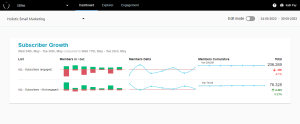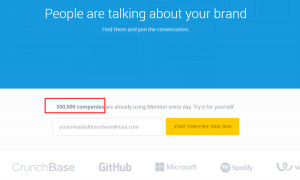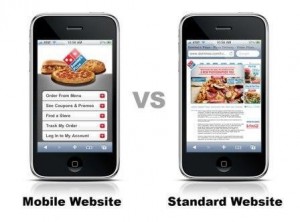
My mother and I were eating at a local restaurant the other day when I got a message from Target. I have the Target app and there was a Target store across the street. They invited me to their store for a “special” deal.
At the same lunch, I opened my Facebook app and found a coupon for another area store. I don’t follow this store, but they apparently had a “local awareness” ad running on Facebook.
Additionally, at the top of my News Feed was a link welcoming me to the restaurant and the opportunity to view all of the comments my Friends had made about the restaurant. It also provided me with a link to see other reviews left on Facebook, because the restaurant had their Place Tips turned on and had an active Facebook Page.
Finally, when it came time to pay the bill, I opened the website of the restaurant to display the coupon that I had found earlier that day on my desktop computer.
Of course, all of these actions happened on my smartphone, which had “found” the restaurant’s wi-fi when we walked in.

The Connected Consumer
Today’s consumers want the opportunity not only to engage with the store in person, but also online via the website, mobile app and social media. Smart “brick and mortar” establishments are beginning to understand the power of leveraging multi-channel marketing to reach and establish relationships with their customers.
However, according to an Accenture Survey, while 47% of shoppers say they want to receive more in-store deals via mobile devices, only 7% of retailers are offering them. (See the blog post from GeoMarketing.)
But it isn’t just about ads and specials delivered to consumers while they are in the area, retail stores must also understand the changing dynamic of shopping. Most people start their buying journey online. They may check several websites and Social Media sites. They may read a blog or watch a YouTube video about the product. During this initial search, they are looking for a product, not a store. Stores that want to attract these consumers must be the ones offering the most relevant and convincing information, across all channels, optimized for both desktop and mobile devices.
According to the GPShopper Founder “Stores aren’t dead, but the traditional store experience is.”
People still enjoy walking into a store to browse and look at items in person. However, if you look around, you will see that most of them are clutching their cell phones as they browse. Retailers must capitalize on this trend and find new ways to connect with the consumer to provide an experience that satisfies them both digitally and physically.
We have become attached to our cell phones
I was behind a young woman at a store the other day. She was having a lot of trouble getting her credit card out and gathering her items. I suddenly realized that she was holding her cell phone the entire time. She couldn’t seem to let go of her phone even for the time it would have taken for her to get her wallet out and pay for her items. I wondered if she even realized that she was holding her phone or if it had, indeed, become a part of her hand.
Digital & Social Articles on Business 2 Community(37)








